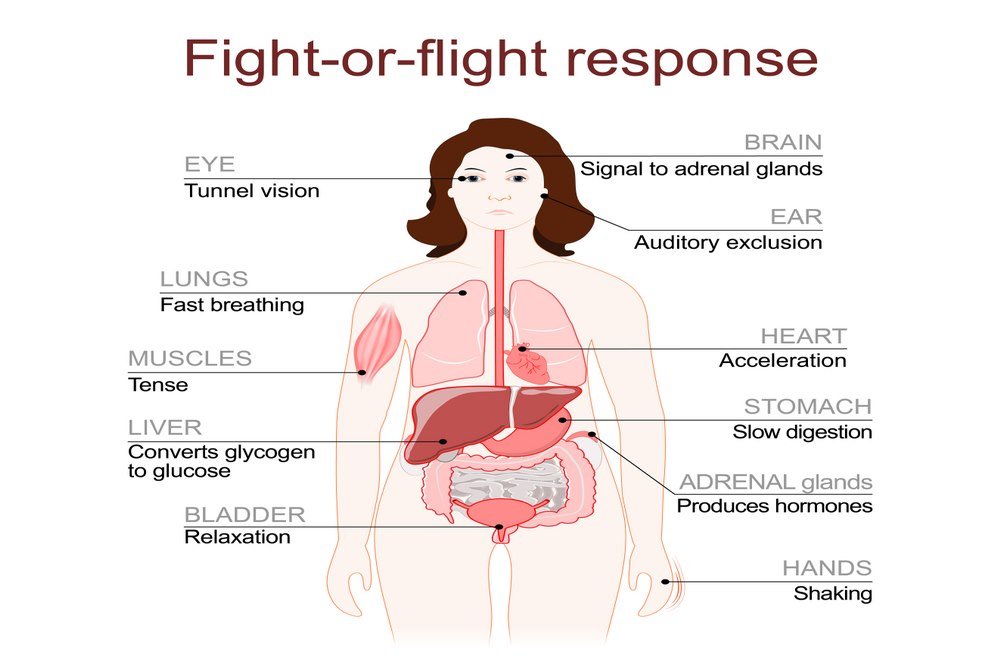Fight or Flight Response

Fight or flight response is the body’s natural protective mechanism that aims to equip the body to face stressful situations. It is the ultimate survival instinct to either fight or flee from the situation. However, in anxiety patients even inconsequential events can trigger this response. This is, their body’s hypersensitivity towards the stimulus, which evokes a defense mechanism to set in.
Fight or flight response is also called the stress response. It is a combination of physiological changes which assist the body to cope with an emergency. Some common features of it are:
- Increased heart rate: can be felt as palpitations or a pounding heart. It is often short-lived. But patients diagnosed with anxiety disorders may frequently have this symptom.
- Rapid pulse and increased blood pressure
- Increased sweating: it is often accompanied by cold and clammy skin. This is because the blood supply is limited to the skin tissue.
- Dilated pupils: In order to provide with best vision to cope with the emergency, the hormones released in the anxiety attacks act on their receptors in the eye to cause dilation of the pupils.
- Slowing of the digestion in the gastrointestinal tract: the digestive tract is a non-essential system in this regard. The blood supply is limited to the digestive tract and promoted towards the essential system like heart.
- Increased tension in the muscles
- Rapid breathing: is brought about to keep the oxygen reserves up to the mark.
These symptoms are manifested as a result of the brain’s electrical circuit hyper-responding to the stressor. Amygdala and hypothalamus are two parts of the brain, which work together with the rest of the body to bring about these physiological signs. The autonomic nervous system plays a significant role in conducting these signals, without conscious awareness of the patient.
In the face of an actual threat, this response is invaluable. But as in case of perceived threats in anxiety, this may be accompanied by shaking, and mental confusion which makes the patient unable to cope with the threat.
